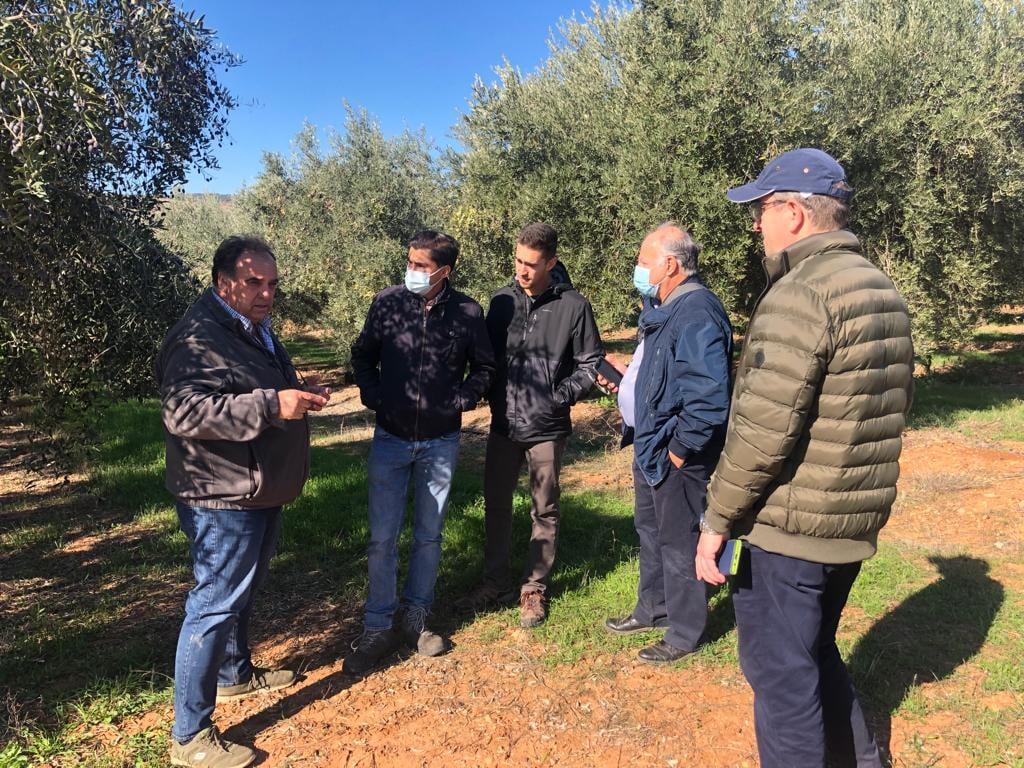FruitFlyNet-ii: Research and local farming go hand in hand

Diego Obrero is a farmer and technician from the Rivera Alta farm, located in the town of Alcolea (Córdoba, Spain). His farm has been chosen by the University of Córdoba to carry out the experimental activities belonging to the FruitFlyNet-ii project, aimed at the commercialization of an automated monitoring and control system for the olive fly. During the visit to the farm, a brief interview was conducted with Diego.
How large is the farm and what crops are grown?
The farm has an area of 1700 hectares, is divided into several growing areas such as onion, rapeseed, garlic, asparagus or almond trees among others. On the other hand, it is divided into a mountain area and olive grove cultivation, the latter occupying an area of 240 hectares. in the olive grove area there are 6 varieties such as: Koroneiki, Arbequina, Nevado azul, Empeltre, Frantoio and Picual. This last variety is where the project's experiments are taking place. The planting frame is 8 x 5. All varieties are destined for oil production. The farm is in a good location near the San Rafael de Navallana reservoir. That is why, it also has irrigation.
Does this year have a lot of fly presence?
This year lower population levels have been observed compared to 2019 when there was a high presence of flies, around 50 flies per flycatcher per day.
What products do you use to control Bactrocera oleae and when are they applied?
This farm is integrated into an Integrated Production Group (API). They are in charge of monitoring weekly by placing yellow traps and Mcphail. The treatment period is carried out when it is observed that the damage threshold increases. Currently, between two and three treatments are carried out. In those areas that are more susceptible and in which the harvest is later, such as Arbequina, patching treatments are carried out. The product used to treat the Bactrocera olea population is cypermethrin 5% (CE) w/v and Deltamethrin 2.5% (EW) w/w among others.
What equipment do you use for treatments?
To carry out the treatments we use a tractor and the atomizer.
What are the problems that cause the most damage to the olive grove?
The main problems that arise are with the repilo (Spilocaea oleagina) and with the olive fly (Bactrocera oleae) since it is an area of humidity.
Do you think that agricultural sustainability is an important aspect to take into account on the part of the farmer?
Yes it is fundamental.
Do you think farmers should support R&D more?
Of course, in this sense we must all go hand in hand. If we didn't have the investigation, we'd be hitting it blindly.
What is your opinion about participating in a European project?
Everything that is working on a project to unite criteria and draw conclusions at a common level seems very appropriate and interesting to me.
What advantages would you find in having an automatic trap as opposed to the classic one?
The advantages over the automatic trap remain to be seen. We must base on results. I am in favor of everything that is technical but I reiterate that we must draw conclusions. Currently trapping is done manually with traps and pheromones that represent indicators, If this process is monitored, gives good results and is interesting, I would be in favor since it would save us a lot of time and we would have data on the network at any time. On the other hand, it would be necessary to assess the acquisition price of this trap and see if the investment is profitable.








